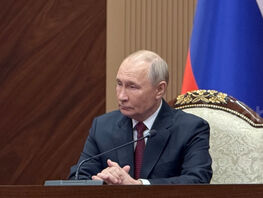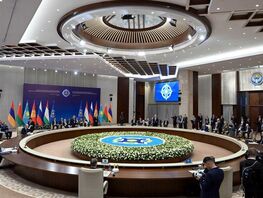Despite impressive economic growth rates, Kyrgyzstan is facing signs of «economic overheating,» which require immediate government attention. This was stated during a joint meeting of the Ministry of Economy and Commerce, the Ministry of Labor, Social Security, and Migration, the National Bank, the National Statistical Committee, the Social Fund, and the Anti-Monopoly Regulation Service.
As noted at the meeting, the country is demonstrating «phenomenal GDP growth, which reached 11.7 percent in the first half of 2025.» All sectors of the economy show confident dynamics: industry grew by 9.8 percent, services by 10 percent, construction by 42.5 percent, and agriculture by 3.8 percent.
These figures indicate a phase of «rapid economic development,» the Ministry of Economy noted.
As part of implementing the National Development Program until 2030, the country is shifting its focus from external dependency to internal sources of growth, focusing on employment, labor productivity, and the development of human capital.
The priority now is not just the quantitative growth of GDP but its quality—building an economy that can create productive jobs, form a sustainable middle class, and reduce the vulnerability of the population.
The previous model, which relied on external factors like remittances and gold exports, ensured short-term stability but made the economy vulnerable to shocks and hindered domestic development, the ministry noted.
Signs of structural imbalances and inflationary pressure
However, worrying signals lie behind the impressive growth figures. The economy is accumulating signs of «overheating» and structural imbalances. Experts point to actual growth rates exceeding potential levels, which could lead to instability.
There is increasing imbalance between income growth and labor productivity, with a significant gap between average and median wages.
One of the sharpest signs of «overheating» is increasing inflationary pressure. In the first half of this year, inflation reached 7.3 percent year-on-year, with food products being the main contributor. Concerns are growing over price distortions in the consumer market, labor force shortages, and excessive growth in consumer lending, which is outpacing economic expansion. Additional budgetary spending is also contributing to the accumulation of imbalances.
Decline in external trade activity and risks for the balance of payments
Amid internal problems, there has been a sharp decline in external trade activity. Exports fell by 27.2 percent, while imports decreased by 11.7 percent. This trend is intensifying pressure on the foreign exchange market and creating risks for the stability of the republic’s balance of payments.
Need for comprehensive solutions
Choro Seyitov, the First Deputy Minister of Economy, emphasized the critical importance of transitioning from targeted measures to a comprehensive and coordinated policy. Government agencies have been given several tasks, including:
- Addressing macroeconomic risks;
- Strengthening monitoring of price dynamics;
- Accelerating measures to support domestic production;
- Reducing reliance on external sources;
- Developing storage infrastructure;
- Optimizing import mechanisms;
- Strengthening control over price chains;
- Coordinating fiscal and monetary policies.
Participants in the meeting agreed on the necessity of strengthening inter-agency coordination, regular exchange of analytical information, and moving toward a more proactive model of economic management to ensure the sustainability and quality of Kyrgyzstan’s economic growth in the long term.







